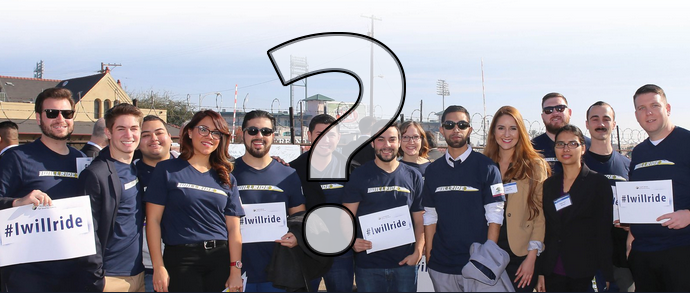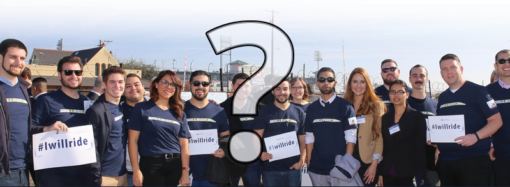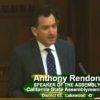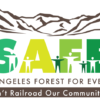While most people concentrate on the extreme cost to build the high-speed rail project, a $77 billion cost per the latest business plan, we forget about the even bigger issue which is that the state will be forced to provide an ongoing yearly subsidy. CHSRA’s foundation law [AB3034 Section 2704(j)] requires its HSR system be built so it does not need an operating subsidy. The newest Grindley/Warren report (see video at the end of the article of their report being presented to the CHSRA Board) has concluded that less than 1 in 5 passengers slated to ride the train, will actually choose high-speed rail which is sure to equal a state subsidy. Why? Because a high-speed rail journey time and cost are higher than auto or air travel.
Why so few riders? According to the authors’ executive summary, nearly three-fourths (74%) of Californian’s population live (and will live) in the state’s three major markets. With one exception (Gilroy-to-Palmdale), the Authority should not claim any riders between California’s largest two markets (Los Angeles Metro Area- 18 Million and the SF Bay Area-8 Million) nor between the second and third largest (San Diego County-3 Million) markets. Air travel is always faster. With no form of CHSRA service, no riders should have been forecasted between Los Angeles and San Diego’s markets.
In the beginning of the authors’ quest to figure out probable success of routes, they sent public records requests for information regarding the Authority’s models and were told they were top secret. The authors were always thwarted by the state’s Evidence Code, [Section 1060, part of the California Public Records Act through Government Code section 6254(k)] from deep scrutiny on how CHSRA claims its high-speed rail (HSR) system is profitable.
Faced with no other alternative, William Grindley explains they spent the last three years constructing a step-by-step, empirical data-based, competitive ‘model.’ It shows how long it takes and how much it costs a traveler on either HSR, Auto or Air to travel between 320 origins and destinations where CHSRA’s trains and buses are scheduled to provide services between 2029 and 2040. For HSR travel, they used only CHSRA and its consultants’ publicly-available data: for Auto and Air travel they used the same sources and web-based data, such as air ticket price and flight times. This Total Travel Time and Total Travel Cost ‘model’ is the first of its kind in the public domain.
According to co-Author, Bill Warren, “there is an important point – the Rail Authority can force construction – getting money for taxes and debt. That is the power of government. They cannot force people to ride their train, unless they block the highways and close the airports. They must be competitive, and they are not, and they never will be without slashing their prices and requiring a subsidy to operate. And they have never been in the middle of a price war with airlines who will continue to cut prices to hold their market share, like between LA and SF; and they have the rest of their air routes, regional and national to cover their costs on the SF to LA routes.”
There’s lot of unbelievable assumptions the Authority made. In their claims for high-speed rail ridership, if riders use HSR to travel to or from Sacramento during Phase 1 (2033-2040), they will be willing to travel on an Authority bus one-way at least 2hours 40minutes: before 2033 the one-way bus ride is 4 hours. Yes, that’s right, long-haul buses are part of the high-speed rail authority’s plans for the consumer to access high-speed rail.
For example, to reach their District Offices, San Joaquin Valley legislators will spend about 50% more Total Travel Time than traveling by Auto; SF Bay Area legislators will spend more than twice an Auto’s Total Travel Time. For districts inside the LA Metro Area, not only is Air travel cheaper, but an HSR trip is more than twice Air travel’s Total Travel Time. San Diego legislators will spend more for fares and more than three times the Total Travel Time using high-speed rail to reach their District than if they traveled by Air.
History of Rail project issues:
Bent Flyvbjerg, is an Oxford business professor and a leading expert on megaproject risk. He explains there is a double hit on rail projects, https://arxiv.org/pdf/1303.7402.pdf
“The analysis of construction costs show that urban rail projects on average turn out substantially costlier than forecast. At the same time the analysis of ridership show urban rail to achieve considerably fewer passengers than forecasted and thus lower revenues. Urban rail is therefore economically risky on two fronts, both as regards costs and as regards revenues.” He also states in the same report that “the double risk is now even more pronounced with an average cost escalation of 40.3 percent combined with an actual ridership that is on average 47.8 percent lower than forecasted.”
And why is it that such a high-percentage is missing the mark? Flyvbjerg said it could be nothing other than strategic misrepresentation, in other words, in some cases outright lying.
Can anything be salvaged in the high-speed rail project?
According to an LA Times article, “One possibility is that the high-speed rail in the Central Valley would connect in Merced with the Altamont Corridor Express commuter rail system that runs through the Altamont Pass to San Jose. In fact, the commuter system’s executives are quietly positioning for that very possibility.”
In the Grindley/Warren report it covers connecting HSR with Ace – in short, it won’t work.
The report states that “the daily Merced-San Jose round-trip ACE-option fares would be $60.50, but the HSR fare would be $118. While the Fresno daily round-trip by HSR would be $132 ($66 x 2), a Fresno resident will have to pay $94 (2 x $47 one-way) to travel Fresno-Merced-Fresno, then $60.50 Merced-San Jose-Merced on the ACE train: $154/day of round-trip ACE-option fares, 17% higher than a one-seat-ride HSR fare. A year of HSR fares isn’t cheap, as Figure 15 in the report shows; but the ACE-option makes those fares at least a quarter more than HSR’s.”
The report concludes “CHSRA’s high costs of commuting by HSR between the San Joaquin Valley and Silicon Valley will not solve the imbalances of housing and jobs of the two Valleys. Nor will connecting HSR with the Altamont Corridor Express (ACE) at Merced; as residents there are unlikely to accept a 9 hour daily commute by ACE train to/from San Jose – nor would Fresno residents accept a daily, round-trip commute of 10 hours 20 minutes by HSR (connecting in Merced) and an ACE train.”
“Asking a Valley resident to give up nearly all – or all of a working day to sitting and changing trains is a non-starter.”
Recent past: Bay Bridge similarities:
In July 2014, then State Senator Mark DeSaulnier conducted hearings on the debacle during the building of the Bay Bridge, the examination was called Lessons Learned and outlined mismanagement and cost overruns for that project. These meetings were supposed to stand as a road map for what not to do for future mega projects Here is the final report. The project in the end was full of delays, cost increases, mismanagement, bad construction practices and it was cloaked in secrecy and hid facts from the public.
Looking at the High-Speed Rail project, it looks as if history is repeating itself; it has spent nearly $5 billion with no tracks laid yet, Phase one was originally supposed to be finished by 2020, it’s at least 7 years behind schedule and we’ve had constant cost increases. The cost to build has increased over 100% ($30B to 70B) from the 2008-time period. Regarding public records requests, they have hidden important facts such as the authors experience. Not only the outright refusal to provide materials but incredible delays meant to discourage the requester. They have changed format on monthly progress reporting from field engineering, removing discussion of concerns from a written format to a verbal format. It reverted to conference calls for progress reports for this kind of discussion instead. Again, removing issues from the public eye.
If the public looks at the recent Audit report which outlines bad judgement, incompetence and waste and the many reports produced by these authors, it shows a road to failure and resembles nothing that was promised in Prop 1A. See the legislative review of the audit in this article.
Hopefully the new administration will consider a pause, complete the Audit for all the other issues not permitted to be reviewed in the most recent audit and see what the next steps are for this project.
To read the complete document go to the Authors site:
The authors have written over 40 reports on why the California High-Speed Rail Authority’s (CHSRA) train would likely need an operating subsidy.





